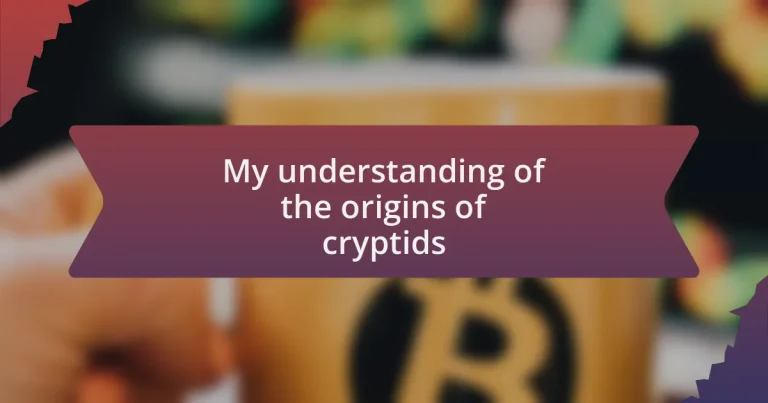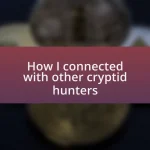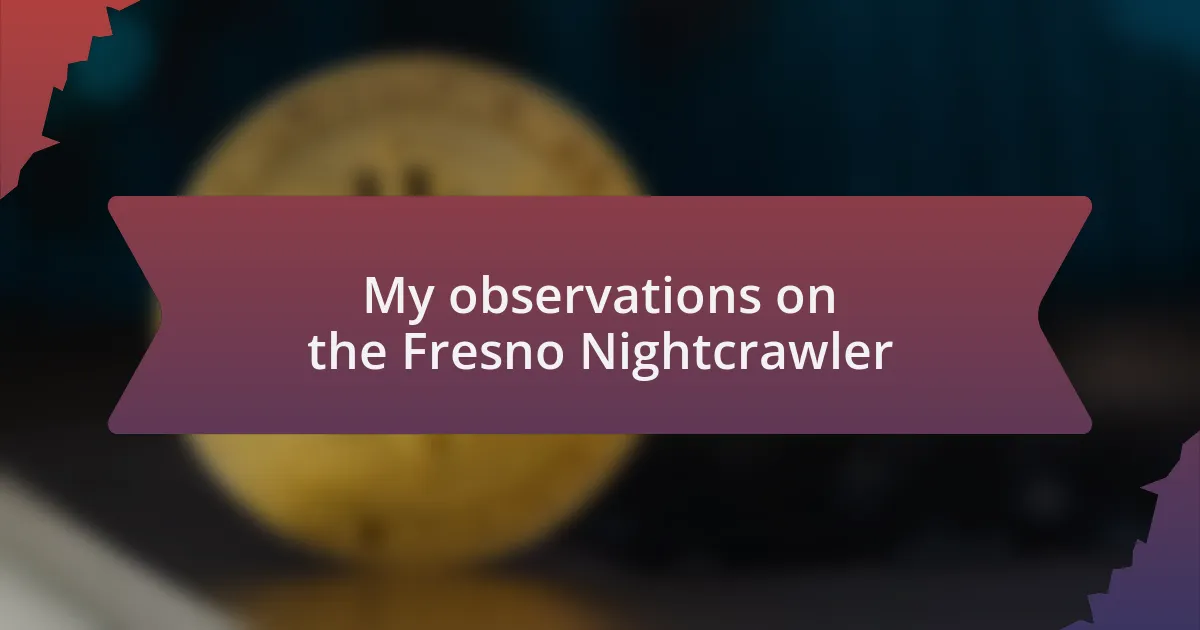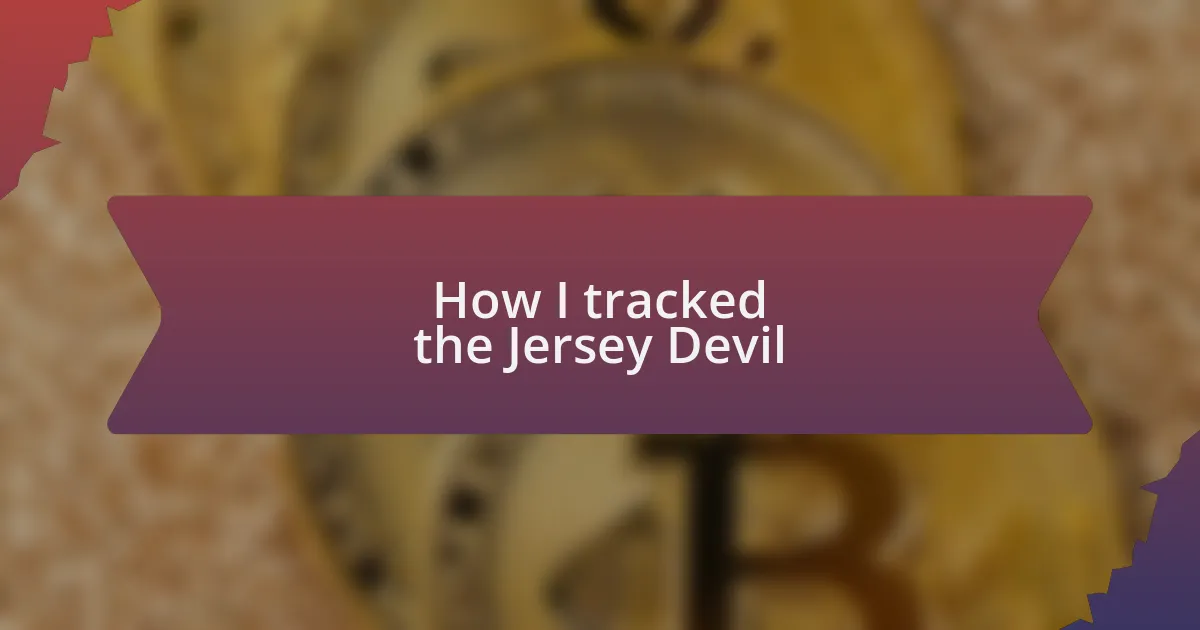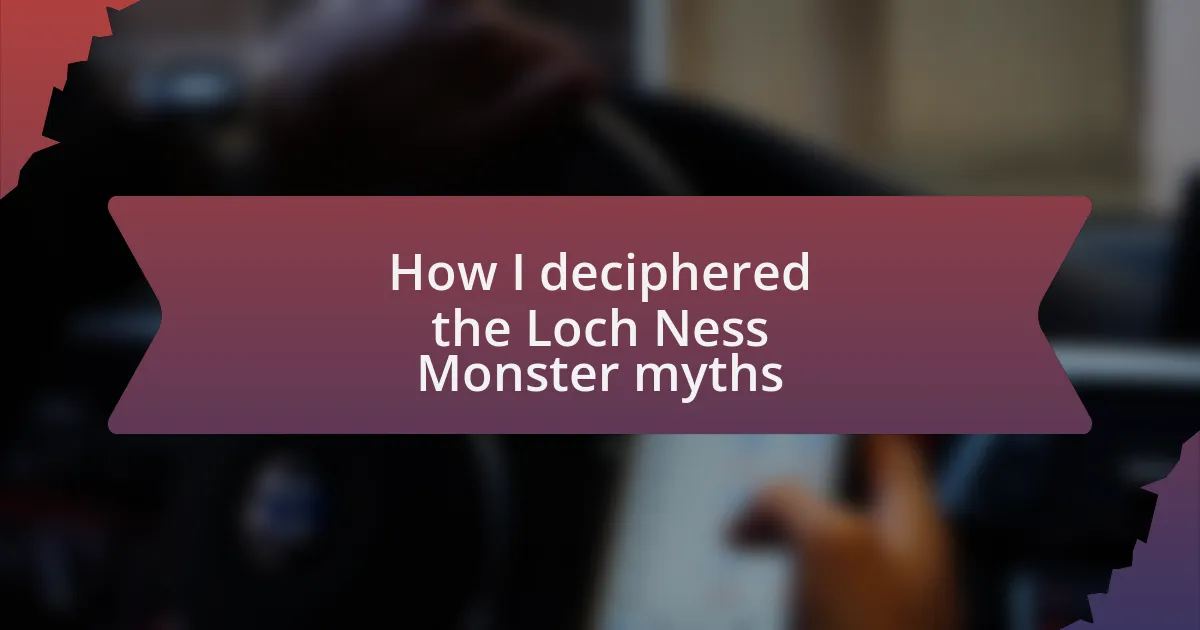Key takeaways:
- Cryptids, like Bigfoot and the Loch Ness Monster, challenge our perceptions of reality, blending folklore with our innate curiosity about the unknown.
- Folklore serves as a cultural lens to understand cryptids, often reflecting societal fears and environmental features of different regions.
- Personal experiences and local legends connect individuals to the mysteries of cryptids, highlighting the powerful human desire to explore what lies beyond our understanding.
- Researching cryptid tales reveals deeper truths about societal values and fears, encouraging reflection on the significance of these legends in our lives.
Author: Evelyn Hartman
Bio: Evelyn Hartman is a contemporary author known for her evocative storytelling and rich character development. With a background in psychology, she weaves intricate narratives that explore the complexities of human relationships and personal growth. Her debut novel, “Whispers in the Wind,” garnered critical acclaim and established her as a powerful voice in modern literature. Evelyn resides in the Pacific Northwest, where she draws inspiration from the vibrant landscapes and diverse communities around her. When she’s not writing, she enjoys hiking, gardening, and spending time with her two rescue dogs.
Understanding cryptids as a concept
Cryptids, by definition, are creatures whose existence is not recognized by mainstream science, yet they hold a captivating place in our cultural imagination. When I first heard about Bigfoot during a camping trip as a child, I remember the thrill of delving into tales of sightings and conspiracies. It invites me to wonder: what if these beings are not just products of folklore, but rather remnants of our world’s mysteries?
The concept of a cryptid often blurs the lines between myth and reality, and I find this duality fascinating. It raises questions about what we deem as “real.” For instance, when I stumbled upon stories of the Loch Ness Monster, I felt a rush of excitement—it’s both terrifying and thrilling to think about hidden creatures lurking just out of sight.
Understanding cryptids means embracing the unknown and the stories that shape our perceptions of nature. In my experience, every cryptid tale carries a hint of truth mixed with imagination, making it essential to look beyond just the facts. After all, don’t we all yearn for a little mystery in our lives?
Origins of cryptids in folklore
Folklore is a fascinating lens through which we can explore the origins of cryptids. Growing up, I often listened to my grandmother recount tales of the Chupacabra with a mixture of fear and disbelief. These stories, rooted in cultural fears or mystery, can often serve as allegories for real-world issues, making them all the more gripping.
Each region’s cryptids often reflect their unique environment and history. For instance, the Jersey Devil embodies the dark woods and haunted landscapes of New Jersey. When I first visited the Pine Barrens, I couldn’t shake the feeling that the tales of this creature were whispering through the trees, grounding my experience in the chilling and rich tapestry of local lore.
It seems that as humans, we have an innate desire to explain the unexplainable, which brings these creatures into existence. I remember pondering over the stories of Mokele-Mbembe in the Congo as a child, and thinking, “What if these tales hold a deeper truth?” Undoubtedly, the cryptids that populate folklore continue to intrigue us because they invite us to consider what lies just beyond our understanding of the natural world.
Famous cryptids and their stories
When I think about the Loch Ness Monster, it brings back memories of the countless hours I spent poring over books and documentaries, captivated by the mysteries of this Scottish legend. The idea of a prehistoric creature lurking in the depths of the loch is both thrilling and unsettling. What if Nessie is more than just a myth? I often wonder if the waters truly hold secrets that science hasn’t uncovered yet.
Another fascinating cryptid is Bigfoot, whose existence seems to linger at the edge of reason. I vividly recall a camping trip where the mere mention of Sasquatch sent shivers down my spine. Stories of blurry photographs and reported sightings in the Pacific Northwest fueled my imagination, making me question whether the truth about Bigfoot is out there, waiting to be discovered in the quiet forests. Could there really be an undiscovered species, or do our primal fears transform ordinary wildlife into legends?
Then there’s the Mokele-Mbembe again, a creature that seems like it stepped right out of a dinosaur documentary. Learning about this behemoth that supposedly resides in the Congo River Basin was utterly fascinating. I felt a thrill each time I read about brave explorers searching for it. Isn’t it incredible how tales of such remarkable creatures can inspire a sense of adventure? These stories serve as reminders that some mysteries of our world may never be fully solved, yet they ignite a spark of curiosity that keeps us searching.
Personal experiences with cryptids
As I sit around a campfire with friends, the conversation often drifts to the eerie stories of encounters with cryptids. One night, a friend recounted an experience in the woods where he heard distinct, heavy footsteps behind him but saw nothing. That haunting silence, broken only by the crackling fire, made me ponder: was it just the wind, or something far more elusive lurking in the darkness?
On a recent hike in a remote area, I couldn’t shake the feeling that I was being watched, an unsettling awareness that pricked at my senses. When I stumbled upon a large, unusual footprint near a stream, my heart raced. Was this a sign of something supernatural, or could it simply be the work of an overactive imagination fueled by stories of cryptids?
Reflecting on these instances, I find myself drawn deeper into the world of cryptids. They tap into our primal instincts, igniting fear and fascination simultaneously. I often ask myself whether these experiences are merely figments of our imagination or if they hint at deeper truths about our world, challenging our understanding of nature and the unknown.
Researching local cryptid legends
Researching local cryptid legends can be an enriching experience that connects you to the history and folklore of a place. During my own exploration, I stumbled upon a dusty library filled with stories about the Chupacabra, a creature said to inhabit the rural areas of Puerto Rico. Reading firsthand accounts and old newspaper clippings brought the legend to life for me, making me wonder how such tales shape our perceptions of the unknown.
I once visited a small town known for its Bigfoot sightings, where locals are surprisingly candid about their encounters. One resident shared a chilling story about a nighttime encounter near the woods, describing it with such vivid detail that I felt the cold air of that night sitting heavy on my shoulders. How often do we dismiss these stories as mere folklore, yet they carry the weight of lived experiences and communal fears?
Diving deep into local legends not only unveils the mysteries of cryptids but also reflects societal values and fears. As I spoke with historians passionate about these tales, I couldn’t help but think: What do these creatures signify for us? Are they simply reflections of our deepest anxieties about nature, or do they represent something more profound that lies just beyond the edge of our understanding?
